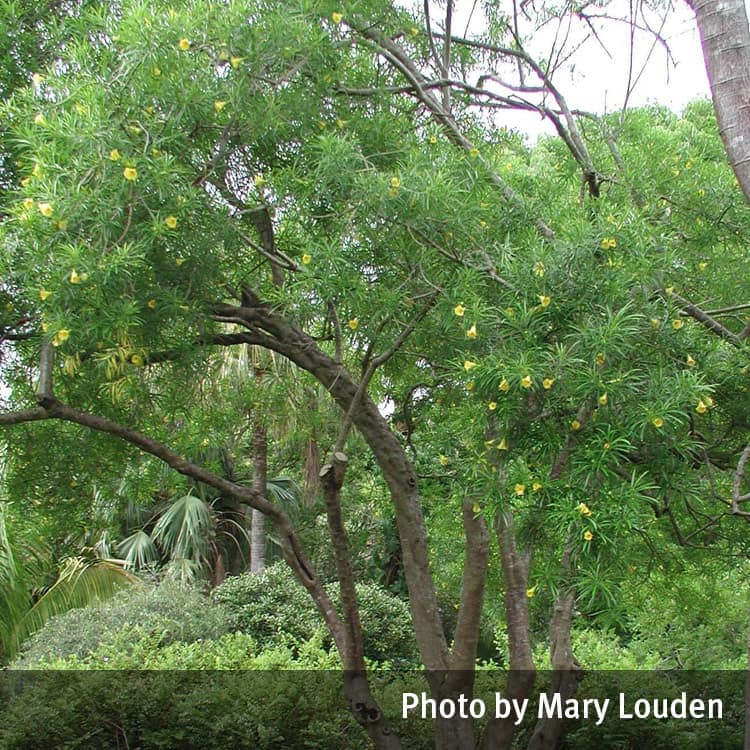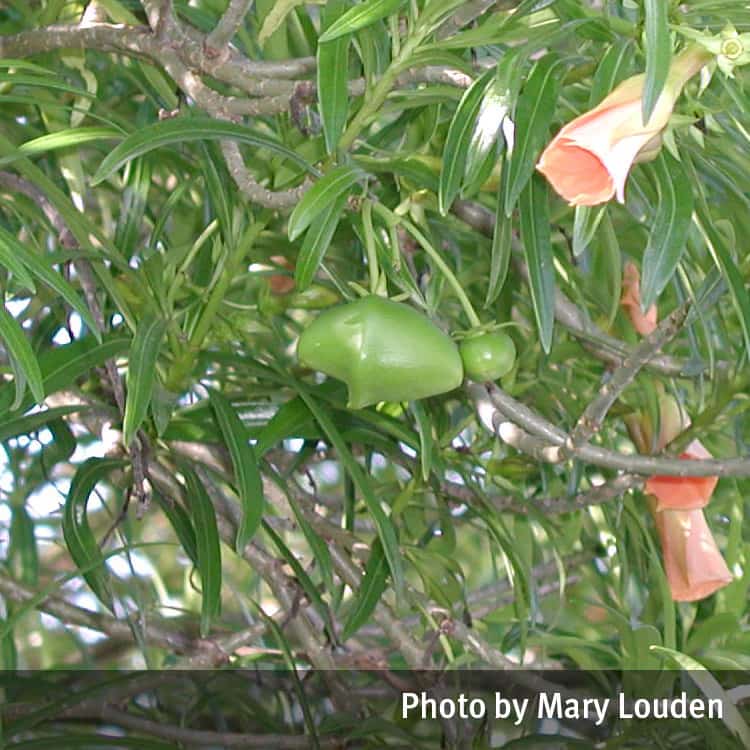Seek urgent medical assistance for all ingestions.
Description
A large spreading shrub usually 2.5–3.5m tall.
The sweetly perfumed flowers are funnel-shaped, bright yellow or peach coloured, 5.5–7cm long and 2.5–4cm wide, grouped in clusters at the end of the branches.
The leaves are glossy green, strap-like, alternating on the stem, 5.5–15cm long and 0.5–1.5cm wide.
Toxicity
Symptoms
All parts of the plant are toxic if eaten, particularly the fruit and seeds. This species has been responsible for the deaths of several children. Symptoms may include a burning sensation in the mouth, vomiting, diarrhoea, dizziness and a slow or irregular heartbeat. The sap may be an irritant and cause dermatitis or blistering.
Images
Details
Common name: Yellow oleander
Botanical name: Cascabela thevetia, Cascabela thevetioides
Other common names: Cook tree, Be-still tree, Lucky nut, Dicky plant
Family: Apocynaceae
General description: A large spreading shrub usually 2.5–3.5m tall.
Flowers: The sweetly perfumed flowers are funnel-shaped, bright yellow or peach coloured, 5.5–7cm long and 2.5–4cm wide, grouped in clusters at the end of the branches.
Leaves: The leaves are glossy green, strap-like, alternating on the stem, 5.5–15cm long and 0.5–1.5cm wide.
Fruit/Berries: The fruit are angular, green when immature, ripening black, broader than long and somewhat triangular in outline, with a raised ridge around the middle, about 3–4.5cm in diameter. The fruit is fleshy and soft like a plum and encloses a “stone” comprising two starchy kernels.
Other: The sap is milky. Cascabela thevetia is a restricted (category 3) species under Queensland’s Biosecurity Act 2014.
Last updated: July 2023

